Science for Kids: How to Teach Big Picture Science
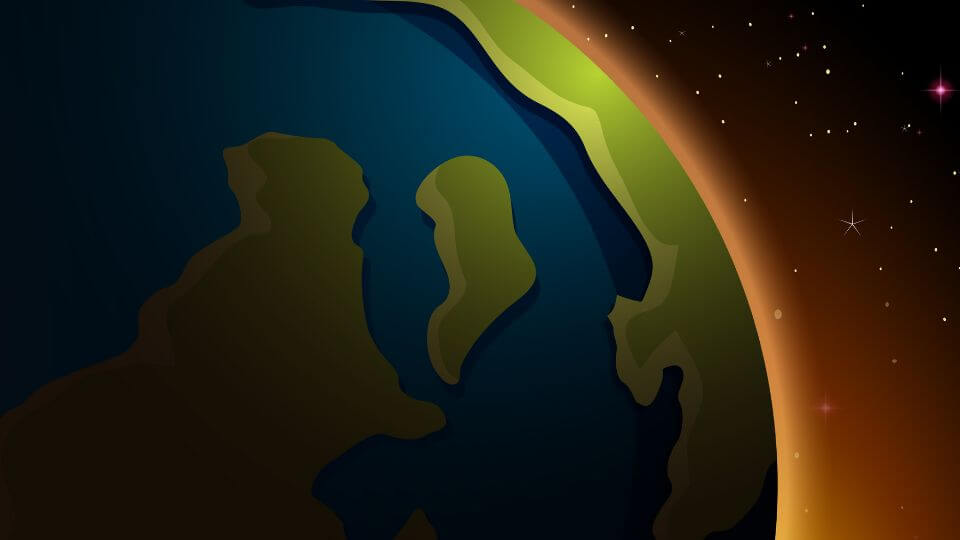
Montessori science for kids starts with broad-level science topics (e.g., the Universe, botany, etc.), then breaks those topics down into more manageable pieces of information. By taking a top-down approach, children gain an increasingly more granular understanding of the world around them and relate information back to a larger common theme.
Science is many things. For some, it is a process of observation and experimentation that leads to an understanding of how the natural world works. For others, it is a system of knowledge that can be used to improve the human condition. Still others see science as a source of wonder and curiosity.
All of these views are correct, but they represent only a small slice of the big picture. In fact, the “big picture” of science is so enormous that it’s hard for many people to wrap their heads around it, especially in an elementary classroom. That’s why Montessori takes a unique approach to teaching science – starting with the big picture and working down into the details.
Read on to learn more about Montessori Laboratory’s approach to big picture science and how it supports a well-rounded Montessori education.
Table of Contents
- What is Montessori science?
- Why use the Montessori approach when teaching science for kids?
- Where science for kids in elementary begins: The First Great Lesson.
- How does the First Great Lesson lead to further scientific exploration for kids in elementary?
- How to teach a science lesson for kids the Montessori way
- Final Thoughts
- Montessori Science Resources for Kids and Adults
- Try Montessori Laboratory’s hands-on science lessons for free
What is Montessori science?
Montessori science focuses on introducing children to advanced topics in order to prepare them for a life of learning and discovery.
This approach differs from traditional science in several ways. For starters, Montessori science is largely student-led. Children get to choose the topics that they’re interested in and use various different modalities to learn about them. This allows each student to be more proactive and engaged in their own education and take a real interest in learning.
One of the key principles of teaching science the Montessori way is allowing students to work at their own pace. They are free to explore different topics as they find interest in them and can move on to other topics when they are ready. With each topic, they’re building on their knowledge and developing a deeper understanding.
Another important aspect of science for kids learning the Montessori way is hands-on experiences. Children can learn about chemistry by mixing different ingredients together, or physics by building simple machines. This allows them to explore concepts in a fun and interactive way.
Also, it’s common for Montessori classrooms to have a mix of ages and grade levels. Children work according to their skill levels and understanding, not just an assigned grade based on age. This mixture of ages works well for Montessori learning because it’s largely student-led. Since students can learn at their own pace, age is less of a factor.
Why use the Montessori approach when teaching science for kids?
In a Montessori classroom, the teacher’s role is to guide students as they explore their environment and learn from their own experiences. This approach lends itself very well to teaching science, as it allows children to learn about new scientific concepts that interest them at their own pace. Rather than being confined by a strict sequence of lessons, they can openly explore ideas – just like a real scientist.
One of the benefits of using the Montessori approach when teaching science is that it helps students develop a better understanding of how the world works. Through hands-on activities, they are able to explore scientific concepts in a way that is fun and engaging. This can help them learn more effectively and retain information longer.
Another benefit of Montessori science is that it helps students foster a lifelong love for learning. By providing them with opportunities to experiment and explore on their terms, they are able to develop a curiosity about the world around them. This can encourage them to continue learning even after they finish school.
The Montessori approach to science also helps students develop critical thinking skills. Instead of memorizing information from a textbook or worksheet, they’re making real connections and observations that can help them gain a better understanding of the science material.
Science for kids learning in a Montessori environment revolves around lessons and activities that are tailored to the individual child, not a one-size-fits-all classroom. Children are praised based on their own progress and understanding of the material rather than compared to the grades and performance of their peers. This can be beneficial in reducing pressure or feelings of competitiveness, both of which can overshadow the real reasons for learning.
By providing children with opportunities to explore science concepts through hands-on activities, Montessori educators and caregivers can help foster a love for science that will last a lifetime.
Where science for kids in elementary begins: The First Great Lesson.
Although science is a BIG part of the elementary years in Montessori, scientific thinking actually begins in the first plane of development (0-6).
Growing babies and toddlers engage in scientific thinking as they explore the world around them. This approach is largely informal and relies mostly on observation and discovery. For instance, a baby or toddler might look at their surroundings, ask “Why?” questions, and grab and throw objects to see what happens. Later, young children might start conducting their own experiments of sorts, such as mixing paint colors or watching items sink or float in the bathtub.
Children then move on to formal scientific inquiry and exploration in elementary school, the second plane of development. By this age, elementary students can think abstractly. They’re building their imaginations. They can plan and carry out projects, step by step.
In Montessori, we find ways to ignite the child’s imagination with reality by introducing real-world phenomena through storytelling. To spark their interest in science, and where they fit into the many happenings of our world, we start with the First Great Lesson: The Beginning of the Universe and Earth.
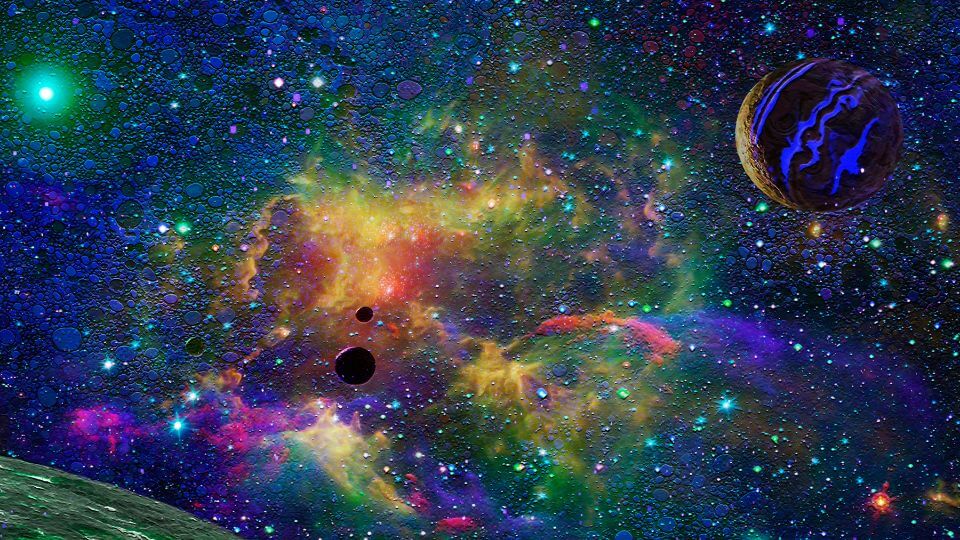
The tradition and telling of the First Great Lesson
The First Great Lesson is Montessori’s introduction to science. In fact, it tells the story of what is considered to be some of the first events that led to the formation of life as we know it.
Educators in Montessori environments typically share the First Great Lesson on or close to the first day of learning for the year. It covers topics such as the sun, stars, planets, and moon, the different states of matter, how the Earth was formed, and some of the important “laws” that everything in the Universe follows. This gives young minds plenty of food for thought and lots of opportunities to ask deeper questions. That’s what science is all about!
Starting with a broad topic like the Universe gives students a variety of subtopics to choose from as they continue learning. From there, they can conduct hands-on experiments on particle behavior, the states of matter, the solar system, and so much more.
As they progress on this first great journey, students can get a better sense of what else they want to learn. The ability of the First Great Lesson to connect to so many different scientific topics never ceases to amaze both children and educators.
The “Laws of the Universe” experiments
The First Great Lesson is a bit of a history exercise deeply rooted in science and storytelling. The lesson is complemented by experiments that help students to put the story into context. These experiments are designed to encourage students to ask questions, such as:
- Why are there stars? Where did they come from?
- How old is the Universe?
- How was our planet formed?
- What is nothing?
Montessori Laboratory has developed a number of hands-on experiments to complement the First Great Lesson.
There’s the Force of Attraction experiment, which helps children understand how planets and other celestial bodies were formed. Some force of attraction brought particles together to form the planets we know today.
The Settling Layers According to Density experiment aligns with particle and matter concepts. When the Earth was forming, denser particles sank to the center, while less dense particles remained at the surface. The equipment needed for this experiment requires simple materials that most classrooms will already have on hand.
The Volcano experiment is a classic in any science classroom. It illustrates how chaotic the formation of the Earth was and gives a great (and safe) representation of how real volcanoes behave.
Montessori Laboratory’s First Great Lesson materials also include nomenclature cards to teach key vocabulary terms as well as research cards to send students on their own exploration in search of further knowledge about the Universe.
How does the First Great Lesson lead to further scientific exploration for kids in elementary?
Once children reach the second plane of development, they tend to naturally gravitate towards science (along with history and geography). They are interested in their world – their place in the world, and how their world works.
That’s why the First Great Lesson starts with the broader concept of existence itself. It’s where everything in science begins. Children need at least some understanding of the Universe and where we come from so they can apply that knowledge to more specific areas of science.
The First Great Lesson introduces a range of science topics, including chemistry, physics, earth science, space science, and biology. It allows students to connect science to the world around them.
This is a wholly different approach compared to traditional science classrooms. While most science classes focus on topics one at a time and praise memorization over application, science for kids in a Montessori learning environment involves lessons and topics that relate back to the big picture. Children have an easier time connecting the dots between the lessons they learn and why they matter, and also why what they’re learning is relevant to everyday life.
The First Great Lesson also lays the foundation for more advanced topics. For example, children may question how life could exist on Earth but not on Venus (or other planets, for that matter). This conversation could then lead them into topics related to biology, botany, zoology, or ecology, and create opportunities for new and further learning experiences.
What should you teach after the First Great Lesson?
The First Great Lesson is just the beginning of a school year filled with learning. After the lesson is over, where do you go from here?
Once you’ve delivered the First Great Lesson, it is a great time to pause and check in with students to see what they’ve learned. Hold a verbal discussion, ask students to write a few sentences about what they remember, and offer time to answer any questions.
Then, you’ll want to see where their curiosity takes them. The goal of teaching science the Montessori way is to give a lesson or tell a story that will spark the child’s interest in one or more topics. Then, it’s up to the child to choose further work to continue their learning.
Sometimes that may look like simply letting them roll with their ideas. Other times it may mean listening to what they talked about after the lesson and making a few suggestions for them to work on based on their responses.
Although many of the Montessori science lessons and experiments do follow a natural order as can be seen on the Montessori Laboratory lessons page, don’t be afraid to jump around!
If they were excited about the volcano demonstration during the First Great Lesson, maybe they want to learn more about volcanoes and the effects of moving tectonic plates. Or, they could go in a different direction and learn about the chemical reaction between baking soda and vinegar that happened in the demonstration.
Maybe it wasn’t the volcano that excited them. Maybe they wanted to learn more about the planets and the Solar System. They can do that too! The possibilities are truly endless when it comes to science for kids learning the Montessori way.
It works well to visualize the learning journey as a wheel. With the universe at the center hub, some natural “spokes” on this wheel are earth science, space science, and the properties of matter.
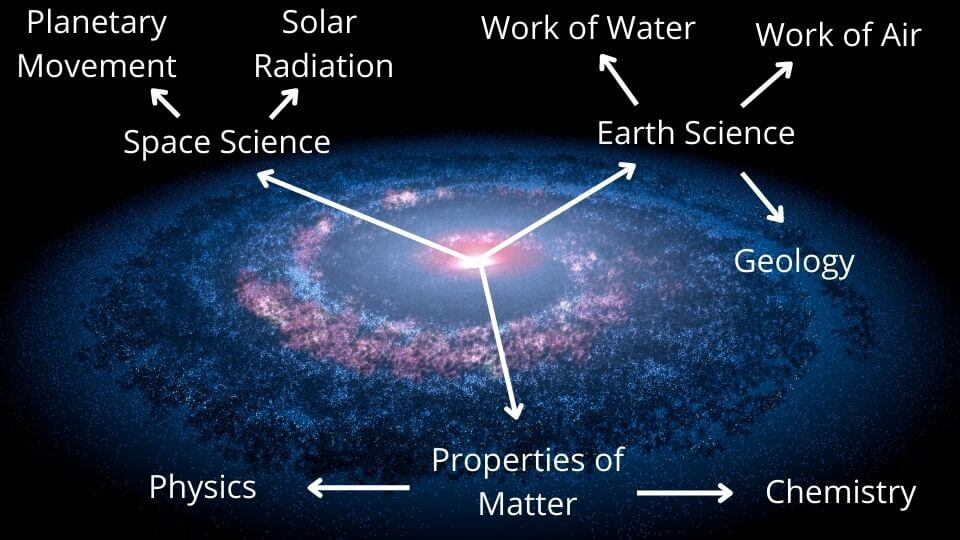
Each of these “spokes” includes lessons that can give way to more questions and curiosities. For example, if a child wants to learn more about planetary movements, they might ask questions like why a year is 365 days or how gravity works. Every learning opportunity gives way to additional questions and opportunities, and each is connected to whatever students learned before it.
This is how a well-rounded education is created. By starting with broad topics, students gain a foundational understanding upon which they can build in a way that interests and makes sense to them.
How to teach a science lesson for kids the Montessori way
Ok, so you know you’re going to start with the First Great Lesson, and you have an idea of what topics you might move on to afterward… but how do you actually go about giving the First Great Lesson? Or any science lesson for that matter?
- Before the lesson: ask students questions to activate prior knowledge, ignite curiosity, and support engagement.
- During the lesson: keep them engaged by welcoming questions and conversation, and encouraging note taking (this includes illustrations!)
- After the lesson: have them use what they learned by discussing or writing about it, encouraging them to do a project on it, or letting them choose/make up an experiment that relates to it.
- In the following days, students can: watch or hear the lesson again, repeat experiments, choose a new experiment or follow-up activity, and think about what lesson they want to learn about next.
As you can see, giving a Montessori science lesson from start to finish involves much more student participation than would be had in a more traditional, lecture-based teaching environment. It is this student-led, hands-on nature of learning that makes science a much more enjoyable and enriching experience for kids learning in a Montessori environment.
Montessori Science Experiments for Kids
A natural step after giving a science lesson is to allow children to do an experiment, demonstration, or other activity led by them. Remember, the point of learning isn’t just to memorize information. It’s to develop a true understanding of what’s being taught, and hands-on experiments get kids engaged in their learning.
You can suggest follow-up activities that will reinforce the information in the lesson you gave. Or, in true Montessori fashion, invite your learner to come up with their own activity to demonstrate what they’ve learned.
Before conducting an experiment, have the students collect all of the necessary materials. Talk about what the experiment is, why you’re doing it, and what you want the students to learn without giving away too much of the process. You want them to make their own observations.
During the experiment, supervise but allow the students to do most of the work themselves. They should be able to follow step-by-step directions, make observations, and even record notes. Students may involve you by asking questions or starting discussions, but ultimately they should be in charge of the process.
When the experiment is over, have students reflect on their learnings. They can fill out an experiment report or simply write about what they saw and learned. You may also opt to have a discussion about the experience instead of or in addition to writing about it.
Then, have the students take charge of cleaning up their workspace and rinsing and storing equipment. This is an important part of the learning cycle, as it supports executive function and self-reliance.
Experiments vs. Demonstrations
Demonstrations (directions that lead to a predetermined outcome) and experiments (steps that test the unknown) are both important activities that help learners understand the topics being taught in the classroom. Experiments and demonstrations build realistic images in the elementary child’s mind. They allow them to put theoretical knowledge into context so they can see their ideas in action.
Experiments and demonstrations should be extensions to the topics you’re teaching. This allows students to relate the information they’re learning with real-time, hands-on activities. Experiments teach scientific thinking and the scientific process. Because they usually follow a step-by-step process, experiments provide structure to learning without stifling the creative flow.
It’s important to have both demonstrations and experiments in a Montessori classroom. They each serve a unique purpose and both reinforce the scientific method at an early age. In some cases, students can even change the variables in a demonstration to turn it into an experiment.
Montessori Laboratory has designed a plethora of experiments and other science activities that align with the traditional Montessori science lessons, and lessons that build on and go beyond them. With more than 100 experiments, printables, and activities to choose from, teachers have a variety of done-for-you materials at their fingertips.
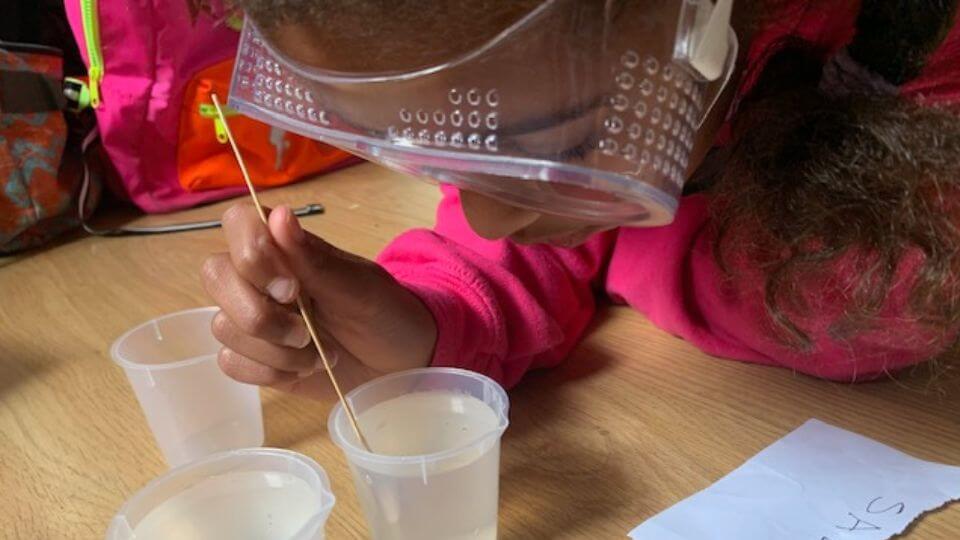
In addition, children in a Montessori environment can be encouraged to make up their own experiments. This is an excellent way to support the child-led learning process and develop critical thinking and creativity.
Montessori classrooms benefit from having a variety of science experiment materials on hand. This allows teachers and students to develop their own demonstrations and experiments whenever creativity strikes. It also helps children develop project management, decision-making, and executive functioning skills by requiring them to gather the materials they need for their experiments from different places. Some of the most common items we recommend include:
- Safety goggles
- Containers of various sizes, beakers, and Petri dishes
- Magnifying glasses
- Measuring spoons, cups, and tapes
- Tweezers
- Droppers
- Funnels
- Writing/marking tools (pencils, crayons, markers, chalk, etc.)
- Fasteners (rubberbands, toothpicks, paperclips, tape, etc.)
- Other miscellaneous materials (filter paper, magnets, pipe cleaners, plastic bags, balloons, construction paper etc.)
- Consumables (sand, salt, sugar, iron filings, chalk powder, baking soda, vinegar, vegetable oil, dish soap, etc.)
Another Key Component of Montessori Science Lessons: Impressionistic Charts
Impressionistic Charts are another material that play a critical role in Montessori science lessons.
Montessori Impressionistic Charts are designed to give children a quick, general overview of a topic. They are meant to stimulate the child’s interest and initiate further exploration. They’re like infographics for children, giving them illustrated information that can be understood quickly.
The use of Impressionistic Charts is an important part of the Montessori approach to teaching and learning – especially in science. Maria Montessori believed that giving children a visual representation of a concept or topic would help them better understand it. This aligns with the idea that we process images 60,000 times faster than text and are able to recall images better than words alone.
Impressionistic Charts are a favorite among students and teachers alike, thanks to rich visuals, colors, and simplified concepts. They can be used in several subject areas, but they’re most popular in science (specifically functional geography and botany). Some common types include:
- Illustrative
- Maps
- Flowcharts
To use Montessori Impressionistic Charts, you first need to find a printable or pre-printed chart. There are many online sources for these, or you can create your own. Once you have the chart, we recommend laminating it for durability. Then, use the chart to support your lesson.
Impressionistic Charts are designed to go with a specific lesson, and a specific story. They can also be used for enrichment and inspiration, especially after the students have received the lesson that they’re intended to accompany.
A Favorite Montessori Science Material for Kids: Nomenclature Cards
Another essential teaching tool in the Montessori classroom is nomenclature cards. Nomenclature cards are an important part of the Montessori curriculum. They help children learn the correct names for things and develop vocabulary skills. The cards can be used at home or in the classroom, and they make a great addition to any homeschool environment.
Montessori nomenclature cards are a great way to help students learn the parts of a plant, the names of the planets in our Solar System, the uses of different chemical elements, and so much more. These cards feature beautiful illustrations, along with accompanying terms. In the elementary learning environment, they also usually feature definitions.
Nomenclature cards come in two sets: a control set (which includes an image, associated vocabulary word, and definition) and a working set (which contains the same information as the control set but on separate cards).
Although nomenclature cards are often used for matching, they are much more than a simple game. The repetitive manipulation of materials helps children learn and improve their recall of information. They promote independent learning by allowing children to engage in activities on their own. Students can use the control set to check their work and see what they’re mastering and where they might need more practice without the help of an adult.
The cards may also spark interest in other research and projects, allowing them to be more proactive in their education. Nomenclature cards combined with experiments can spark the child’s interest and ideas for further learning about a subject.
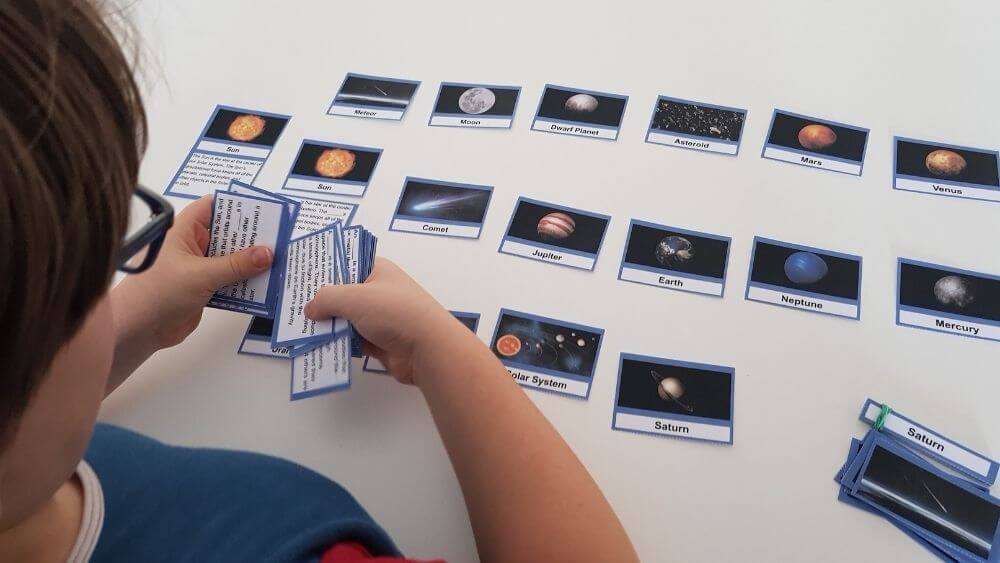
Montessori Science Projects for Kids
We know that the lesson is only the beginning, but that doesn’t mean that the demonstration, experiment, or other activity is the end. All of these components work together to create a holistic view of a particular subject. And when combined, they can also lead to additional Montessori science projects that showcase what each student takes away from the lesson and other experiments.
For example, children might create a poster to display information about a lesson. Elementary children love posters because they represent big work, and give them the chance to get creative and colorful. A poster can include hand-drawn illustrations, magazine cutouts, sentences, words, or even real photographs. This is a great way to let students get creative and make something that’s completely their own.
Models are another idea to reinforce each science lesson. These might be models made of clay, dioramas, 3D paper crafts, or even maps made with sensory materials, such as flour or sand.
Flipbooks, research reports, graphs, presentations, and even books or plays can support the lesson and experiments too. They add another dimension to the learning journey and help students learn how to communicate what they learn in different ways.
Final Thoughts
Science for kids in a Montessori environment means getting to explore their natural curiosity and desire to learn. Concrete, hands-on activities allow students to explore, experiment, and discover scientific principles in their own way and at their own pace. In addition, the use of manipulative materials helps children develop problem-solving skills, understand mathematical concepts, and gain knowledge about how science works.
It takes a very different approach to teach Montessori science compared to traditional elementary science. However, the benefits of student-led learning, tactile materials, and proactive engagement cannot be overstated.
Successful teaching in a Montessori classroom requires an understanding of the Montessori approach as well as materials and resources that enable this type of learning environment. Having lesson examples, experiments, and project ideas give students a variety of options to choose from to guide their learning. It removes the guesswork for the teacher so they can focus on what they do best – nurturing the next generation of scientists.
Montessori Science Resources for Kids and Adults
As you develop your science environment, it’s important to choose helpful resources that support the learning journey and provide students with a well-rounded experience. The more you can put science ideas into context, the better students will be able to grasp and retain this new knowledge.
Here are some ideas to get you started:
- Places to Find Montessori Nomenclature Cards and Printables
- Places to Find Montessori Science Experiments
- Free Big Picture Lessons with Accompanying Hands-On Experiments & Activities
Montessori Laboratory offers lessons that can be given to children or used as a guide to teaching the lessons. We have tons of experiments and supporting resources, including nomenclature cards, research cards, and other activities. We tie everything together into a fully developed science education while staying true to Montessori principles, and customary Montessori science lessons.
Learn more about how you can support your science offerings with expertise and confidence by using Montessori Laboratory!
Try Montessori Laboratory’s hands-on science lessons for free
Are you interested in seeing what Montessori Laboratory’s big-picture lessons, hands-on experiments, and engaging science activities are all about? Check out the free lessons below!
The First Great Lesson
Where did the stars come from? And the Sun? How was our Earth created? And what about the rest of…
Combining and Separating
Why does sand settle to the bottom of the ocean, but salt mixes in? How do people get sea salt out…
How Did Humans Discover Fire?
When did we start using fire? What 3 components does fire need to burn?
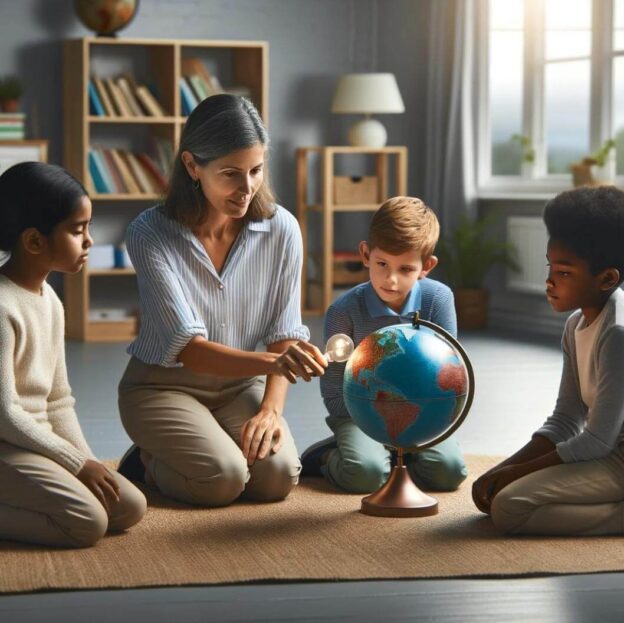
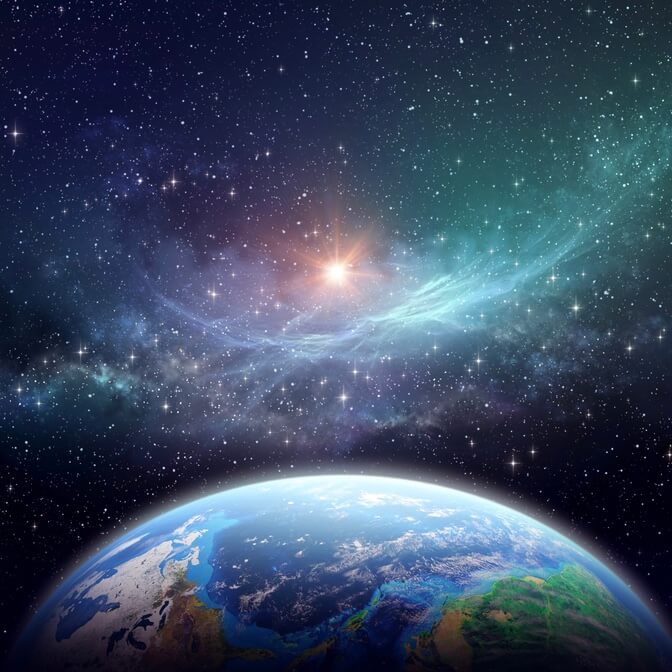

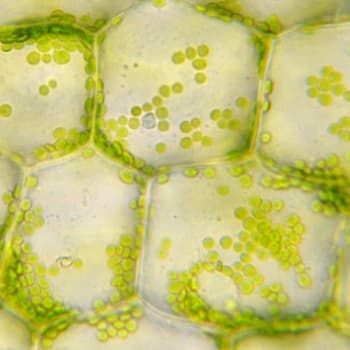

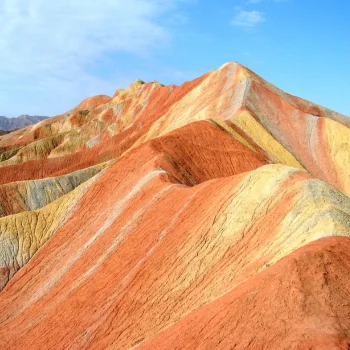
Responses